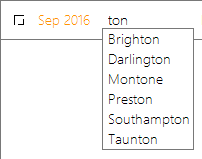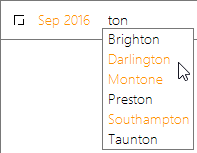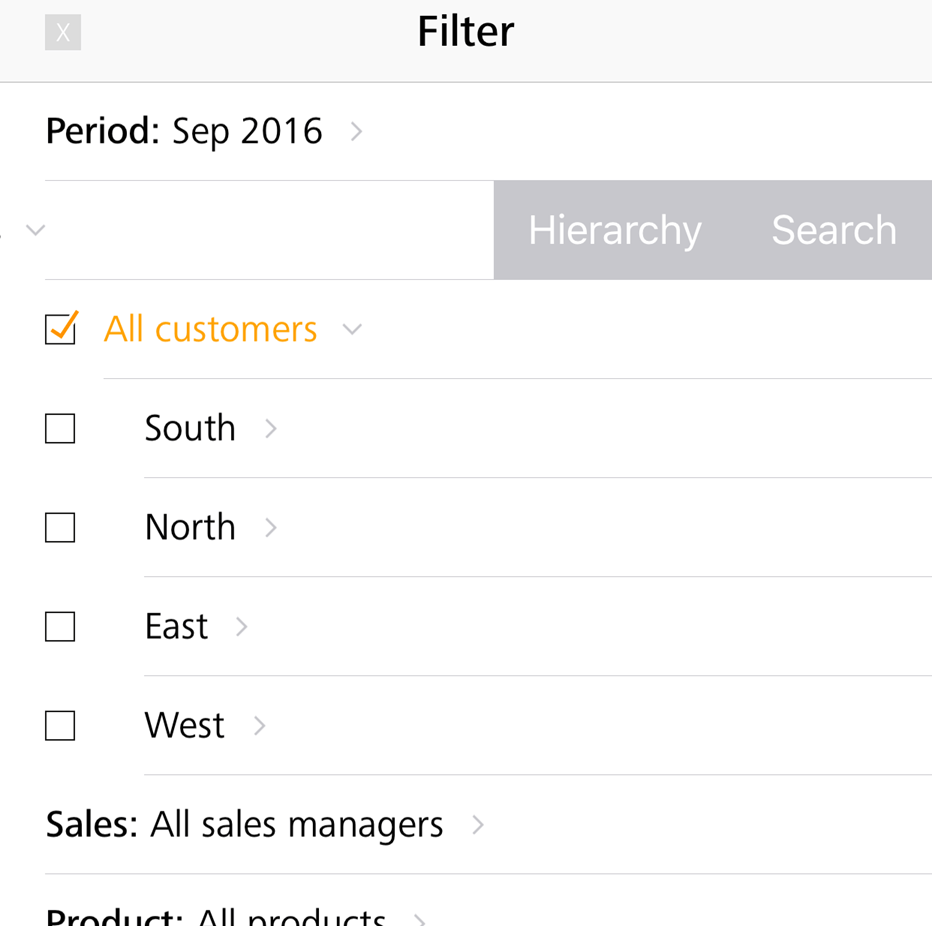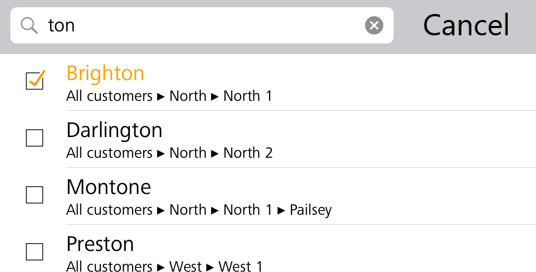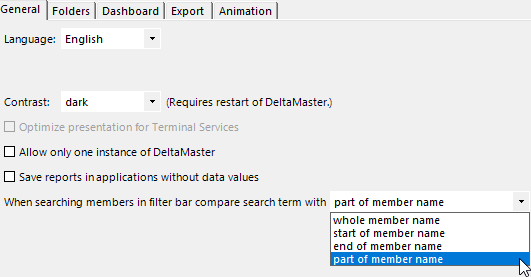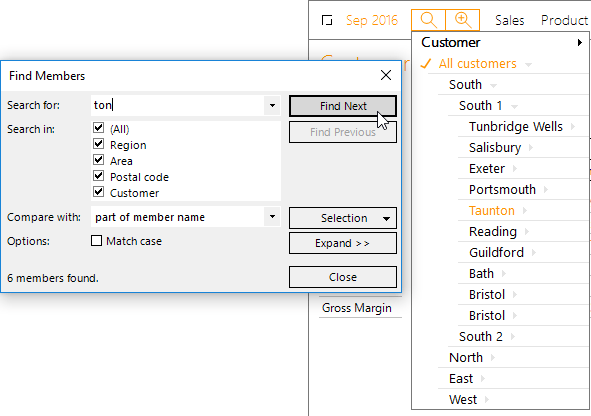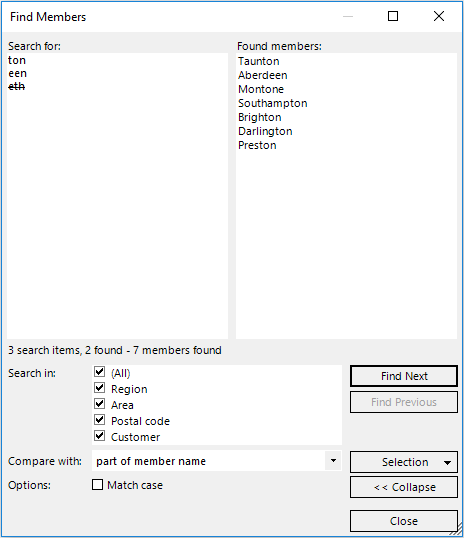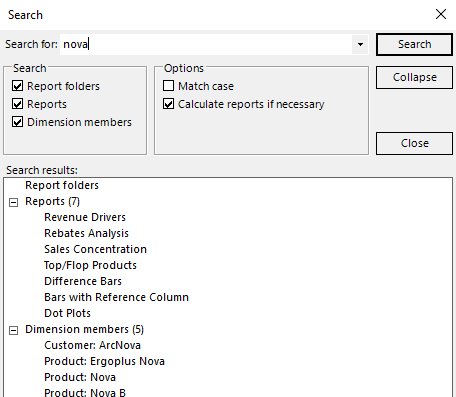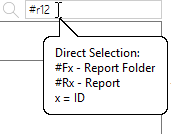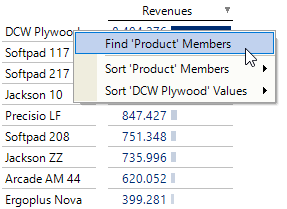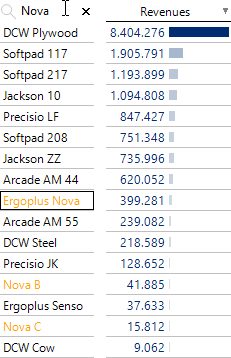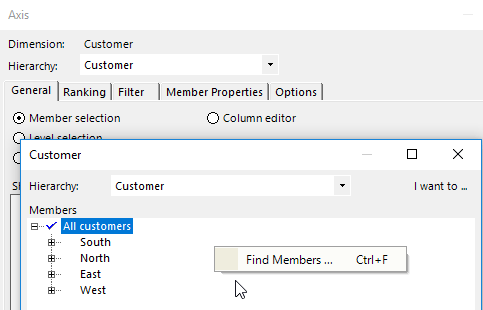Greetings, fellow data analysts!
In the past, when there was still a number of different search engines on the Internet, they were divided into two different categories: catalog-based and index-based. Catalogs such as DMOZ, Yahoo, and web.de arranged websites into a given structure, whereas index-based services such as Google or Bing prepare websites for individual search queries. Catalogs barely feature on the Internet these days – perhaps because the Internet is too unstructured for them. In business intelligence applications, it is a different story: They have a structure, and the catalog is the dominant gateway to it. In lists and tree structures, you are presented with what there is, and you select what you need. With DeltaMaster, the other route is also open to you: If you already know what you need, a search query is usually much faster than the catalog. Everything worth knowing about this can be found in this issue of DeltaMaster clicks!.
Best regards,
Your Bissantz & Company team
![]() A search function is always practical when you know what you want: which customer, country, product group, company, cost center, month, year, etc. is to be displayed. Instead of selecting the desired objects from lists or tree structures, for instance, you enter the name of the search object via the keyboard.
A search function is always practical when you know what you want: which customer, country, product group, company, cost center, month, year, etc. is to be displayed. Instead of selecting the desired objects from lists or tree structures, for instance, you enter the name of the search object via the keyboard.
DeltaMaster provides a search function for the following tasks in Presentation mode:
| Selecting dimension members (filter attributes) for report or folder | Filter bar, menu bar |
| Displaying folder or report | Menu bar |
| Finding members, member properties, and measures in the report | Context menu of Graphical Tables |
There are two further options in Modification mode:
| Selecting dimension members for axis, named set, or virtual hierarchy | Dimension browser |
| Selecting measures for axis or filter bar | Measure browser |
Simple member search in the filter bar
The search function in the filter bar is particularly easy to use – in the area above the report where it is possible to see and set which filters act on the report.
Right-click on the name of a dimension (of a filter criterion, for example customer or product) or of the previously selected members. A small menu with two buttons appears.
The left-hand button, the one with a simple magnifying-glass icon, leads to the simple search. If you click on the button, it is replaced by an input field. You can also access this input field if you hold down the Shift key and click on the dimension name or member name – users of DeltaMaster 5 are familiar with this shortcut.
Enter the desired name via the keyboard and press the Enter key. DeltaMaster then searches through the current hierarchy and compares the names of the members with the entered string.
- If precisely one matching member is found, DeltaMaster selects it automatically.
- If multiple matching members are found, DeltaMaster displays them in a list.
- To select precisely one member from here, click on it once. The selection is adopted immediately and applied to the report.
-
- To select multiple members, hold down the Ctrl key and click on the desired members one by one. Selecting a range is also possible with the customary key combination of clicking on the first or last member of the range while holding down the Shift key (after having selected at least one member with Ctrl+click). The selection is adopted and applied to the report as soon as you press the Enter key or right-click on one of the marked members.
-
- To preserve the current filter settings instead of using the displayed members, press the Esc key or click anywhere outside the list.
The simple search works in the Windows client in Presentation mode and in Modification mode as well as on the web and in the App for the iPhone/iPad.
In the App, start the search by moving the dimension that you want to search through to the left. By doing so, you will reveal a Search button on the right-hand side.
In the hit list, tap on a check box to select the member. As soon as you cancel the search, the member is set as a new selection.
Options for text comparison
When searching via the filter bar, DeltaMaster compares the entered search term with the member names. The Options (accessible via the gear wheel ![]() in the menu bar) determine the relevant part of the name: the whole name (i.e. the search term must fully match the member name), the start, the end, or any part of the member name. The last option is the least specific and delivers the most hits. The default setting is: start of member name.
in the menu bar) determine the relevant part of the name: the whole name (i.e. the search term must fully match the member name), the start, the end, or any part of the member name. The last option is the least specific and delivers the most hits. The default setting is: start of member name.
Extended member search and member selection in the filter bar
The right-hand button, the one with the magnifying glass and a plus sign, opens a dialog box that offers additional search options. This inconspicuous dialog box packs a punch!
Its functions include restricting the search to specific hierarchy levels. This makes the search more specific and occasionally faster, for example if customer or material groups are sufficient and the lowest level, at which there might be tens or hundreds of thousands of members in some applications, can be excluded.
Particularly interesting are the ways in which the search results can be used if there are multiple hits.
After you have entered a search term and confirmed this with the Enter key, DeltaMaster displays the number of members found, bottom-left in the dialog box, and opens the menu for member selection in the background. With the Find Next and Find Previous buttons, DeltaMaster moves from one hit to the next in the menu and highlights it in orange letters. Members on deeper, initially invisible levels are also taken into account; if necessary, DeltaMaster opens the corresponding branch in the menu automatically. However, the colored marking alone does not yet count as a selection – you have to click on a member for it to be selected and provided with a check mark to denote this. The customary key combinations apply: Ctrl+click for multiple selection, Shift+click for selecting a range. The search dialog box remains open while you are working with the menu behind it. Even when you close the dialog box, the member menu remains open. To close the menu and adopt the selection as a filter setting for the report, press the Enter key or click anywhere outside the menu.
The Selection button allows you to carry on working with the set of found members. The three available options refer to the relationship between the found members and the current member selection – i.e. the members already provided with a check mark in the menu at the back. Example:
| Selected: | Found: | If you apply the following action to the Selection … | …, the following are selected: |
| Bath Brighton Salisbury |
Brighton, Preston Taunton | Replace by all found members | Brighton, Preston Taunton |
| Add all found members | Bath, Brighton, Preston, Salisbury, Taunton |
||
| Remove all found members | Bath, Salisbury |
As the dialog box also stays open after replacing, adding, or removing members, the search and selection processes can easily be applied repeatedly in order to set the ultimately desired filter in stages.
If you expand the dialog box with the corresponding button, DeltaMaster accepts multiple search terms, not just one. Multiple members can be entered at once in the left-hand field (or, for example, copied and pasted from Microsoft Excel); the hit list is displayed on the right. This is very useful e.g. if the Sales requests an evaluation for a whole list of customer numbers or material numbers.
This multiple search, as it is known, is described in DeltaMaster clicks! 08/2010; we will address it again in one of the forthcoming issues.
Universal search in the menu bar
Another, very easy-to-use search function is accessible via the menu bar. This is shown if you move the mouse over the area at the very top of the window. The search function includes the icon with the magnifying glass as well as the input field to its right.
When you click on the icon or use the key combination Ctrl+F, a small dialog field opens. Enter the desired term there and use the check boxes to select which DeltaMaster objects are to be searched through: Folders, Reports and/or Dimension Members. Start the search by pressing the Enter key or clicking on the Search button.
The search results are displayed in the bottom part of the dialog box, grouped into folders, reports and dimension members. Click once on the results to display or select them. The dialog field remains open and in the foreground, enabling you to move from one report to the other or set various members as filters quickly, for example.
The search function is extremely thorough with reports: It takes note of the content of the reports as well as their names. For instance, the measures and dimension members found on the axes and even report comments (except database-supported comments) are taken into account. This way, for example, you can track down all reports that mention a specific cost center, a specific customer, or a specific key figure. An essential condition for this is that the reports are calculated. If needed, you can ensure this with the corresponding check box.
When searching in dimension members, DeltaMaster takes into account all dimensions and levels that are available in the current filter context (View context) or in the current perspective. It is irrelevant whether the simple filter bar or the expanded filter bar (via the icon) is displayed. This way, expanded filters can be set without showing the full dimension selection – or without knowing exactly to which dimension (of several that sound the same) a member belongs. If you click on one of the found members, DeltaMaster selects it immediately and sets it in the corresponding dimension as a filter. A prior selection is replaced in this case. Therefore, precisely one member is always selected; there is no provision for multiple selection here. As with reports and folders, the dialog field remains open and in the foreground after you have selected a member. In the default setting, dimension members are not included in the search and reports are not calculated (the check boxes are deactivated), in order to accelerate the search.
Instead of opening the search dialog box and entering a term, you can alternatively enter the term in the search field of the menu bar; the Enter key then opens the search dialog box with the entered term.
In addition, via the search field, it is possible to open a specific report or folder directly if you know its ID. To do this, enter “#Rx” or “#Fx” in the field, with “x” standing for the ID of the report or folder respectively. This ID is displayed as the report or folder ID in the Report or Folder Properties; alternatively, it is displayed as a tool tip, if you hold down the Alt key and point the mouse at a report or folder in the report list. The syntax for this direct retrieval is displayed as a tool tip for the search field. The abbreviations used in DeltaMaster 5 for report types can also be entered as a search term, for example „PIV“ for Graphical Tables (pivot tables) and „PFL“ for portfolio analyses.
The search field only exists in the Windows client, and not in the WebClient or the App.
Finding members, member properties, and measures in the rows of Graphical Tables
A search function also makes navigation within reports easier: In the Windows client, it is possible to search through the row axis of Graphical Tables. This is particularly useful in long tables with customer names, material numbers, account names, and the like. This type of search is started via the context menu of members, member properties, or measures in a Graphical Table.
At the very top of the relevant column, an input field then appears in which you enter the desired search expression. During entry, after each character is entered, DeltaMaster searches for the search term anywhere in the member names, the property values, or the measure names. Hits are highlighted in orange.
With the F3 key, DeltaMaster moves to the next row containing a hit, and with Shift+F3, it moves to the previous row containing a hit. To exit search mode, press the Esc key or click on the “x” on the right in the input field. The search term is always searched for as part of the member name, measure name, or property value, and is case-sensitive.
Searching in Modification mode
The above tips on searching apply to report recipients and report editors alike. The latter will find a search function in two further places in edit mode: in the Dimension browser and in the Measure browser.
In DeltaMaster 6, the Dimension browser is hardly ever needed – the most frequent work is now done with the menu in the filter bar. When you edit Graphical Tables, the Dimension browser is used in the context of Axis definition in order to stipulate a member selection (“pick list”). For the corresponding task, it is also available when modeling, namely in the Editor for calculated members and in the filter bar, in order to create or edit custom hierarchies and calculated members. In the Dimension browser, the search is started with the key combination Ctrl+F, via the context menu, or via the I want to menu. The search dialog box described above is opened, giving you options including stipulation of the level to be searched through and adoption of the found members to define the selection.
The Measure browser also has a search function that is started with the key combination Ctrl+F, via the context menu, or via the I want to menu. Its operation and way of working are the same as with the search via members.
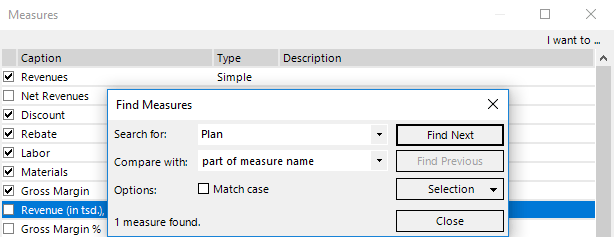
Searching with placeholders
Under specific conditions, you can use the familiar placeholders “?” and “*” when searching through members and when filtering member names and member properties. The question mark stands for any one character, and the asterisk stands for any number of characters of any kind, including no character or just one. To escape the effect of the placeholder characters, place them in square brackets: “[?]” or “[*]”.
DeltaMaster supports this function in conjunction with Microsoft Analysis Services and the ASSP (Analysis Services Stored Procedure Project, asstoredprocedures.codeplex.com) extension.



